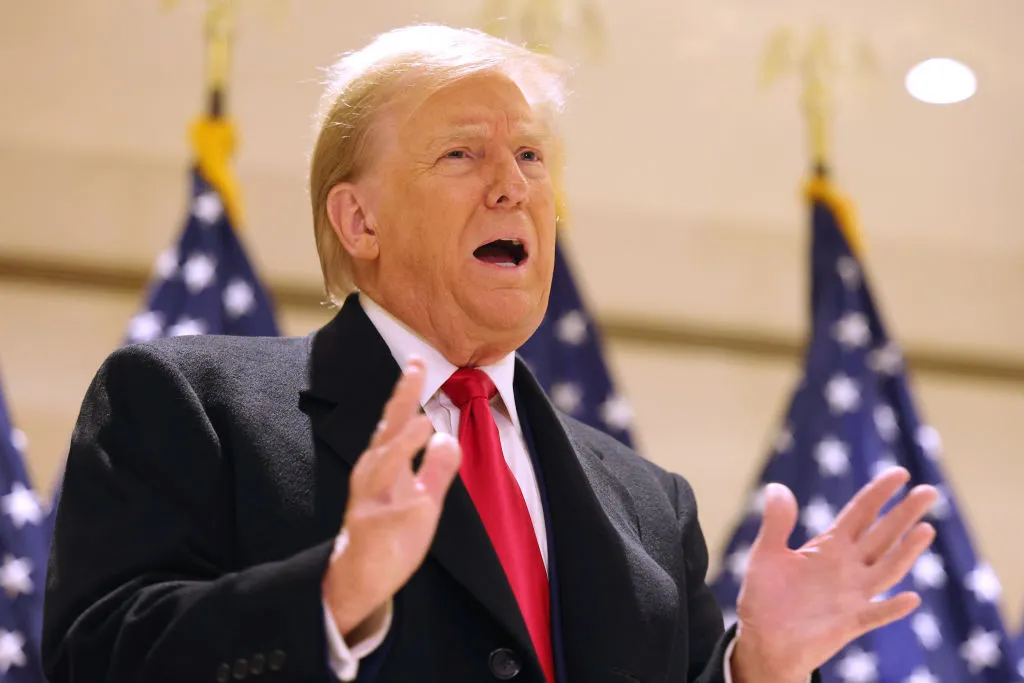For a woman whose life was all about ascent, there is a cruel irony to the fact that Ivana Trump was found dead at the age of seventy-three at the bottom of the stairs of her Upper East Side apartment last Thursday. Born in 1949 in communist Czechoslovakia, the girl whose father was an electrical engineer made her name on the basis of dizzying verticals: first as a professional skier and then as billionaire’s wife and manager of her second husband Donald Trump’s eye-bending skyscrapers in New York and Atlantic City. After her acrimonious tabloid divorce from Donald in 1991 following his affair with chorus-girl Marla Maples, Ivana made her name from surviving — and exposing — the indignities of her marriage’s collapse.
Writing two thinly veiled fictional accounts For Love Alone and Free To Love, followed by her bestselling self-help book, The Best is Yet To Come: Coping With Divorce and Enjoying Life Again, the First Mrs Trump rose to become an unlikely feminist icon: canonized as the Patron Saint of Scorned Women and later immortalized in a cameo in the blockbuster film The First Wives Club starring Diane Keaton and Bette Midler. All this with her trademark blonde up-do — a veritable skyscraper in itself — which she seemed to barely alter from the Eighties up to the few remaining pictures of her taken as a contestant on Celebrity Big Brother. More than just a hairstyle, the hair stood in, metonymically, for so much: her roots (quite literally) from behind the Iron Curtain, the brassy aesthetic of the Eastern Bloc later expressed in the marbled corridors of Trump Tower, and perhaps most of all, a belief in a certain brand of womanhood where capitalizing on glamour and connections was par for the course.
As the beneficiary of an enormous $25 million divorce package which is reported to have included gold apartments, yachts and mansions dotted all over the East Coast and Florida, Ivana made for an unlikely standard-bearer for the average downtrodden woman. But this was as nothing to her supporters who saw in her a determined grafter whose triumph over her philandering husband promised a feminist future in which former wives couldn’t simply be cast off and forgotten about. As one New York gossip columnist put it, “If she is over the top with her wardrobe, or the things she says, it is forgiven because she has been beaten down and she has risen to the top. America loves an underdog.” Watch the clip of her teetering around in The First Wives Club and you can see its appeal: the big hair and bootstraps feminism that so captured the American credo of self sufficiency.
Like her daughter Ivanka after her, Ivana was quick to monetize her feminist credentials, representing the very thing that brown-rice feminists had fought so hard to counter: the diet and beauty industry. In one memorable commercial for milk, Ivana looks straight at the camera before declaring “You know what I say darling, you can never be too rich or too thin.” In another (albeit unpaid) declaration some years later, she admitted to eating a hot dog — never with the bun — and then starving herself for two days afterwards in shame. Perhaps most confusingly of all for the millions of women who had projected their frustrations onto her, she recanted the famous rape accusations she made against Trump in her divorce deposition, later saying she had not meant them literally. In the frenzied days of his presidential bid in 2016, Ivana even came out to stump for “the Donald,” calling him a feminist and crediting herself with having nurtured his political ambitions.
In the end, Ivana never quite adopted the role of feminist resistance figure that the public had carved out for her. Maybe she never wanted it in the first place. Her post-Donald life — in which she married a much younger man, Rossano Rubicondi, with Trump’s blessing at Mar-a-Lago — suggests that she had never really stopped being Mrs. Donald Trump at all. In his online obituary to his first wife, written not on Twitter (from which he is banned) but on his social media platform TRUTH Social, the former president naturally edited out the entire chapter of her feminist uprising, focusing instead on her role as mother to their three children: “She was a wonderful, beautiful and amazing woman, who led a great and inspirational life. Her pride and joy were her three children… She was so proud of them, as we were all so proud of her. Rest In Peace, Ivana!”
There was no sign of the animosity between the couple that had so ignited the public imagination years before. For me, the hair said it all: a mysterious force in its own right that remained, I hope, perfectly vertical right to the end.
This article was originally published on Spectator Life.






















